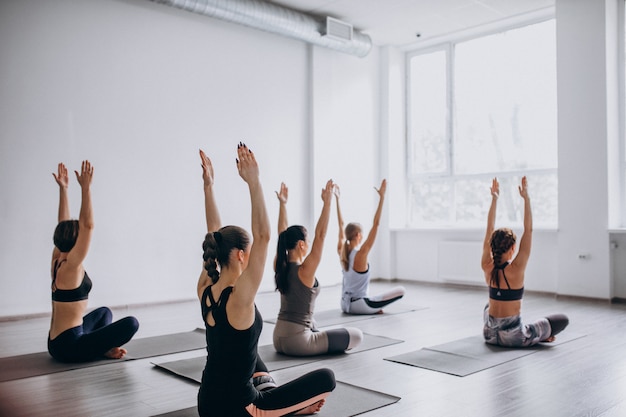
Practicing yoga is much more than just getting flexible; it can actually help improve your memory, heart health, and bone strength. In the UK, people are spending a whopping £790 million each year on yoga classes and mats. While some yoga trends, like rage yoga or yoga on paddle-boards, may seem strange, real scientific evidence is backing the benefits of this ancient practice.
Researchers at UCLA discovered that participating in yoga and meditation for three months was more effective at reducing age-related brain decline than memory exercises. This kind of yoga was also found to improve sleep for breast cancer survivors. When Lucy Edge, a 53-year-old former advertising executive, fell into depression, she turned to yoga instead of medication. After six months in India learning yoga, she returned happier and more content.
Lucy has since written books and launched the Yoga Meds section on her Yogaclicks.com website, listing clinical trials that show yoga’s benefits for various conditions like arthritis and insomnia.
For improving memory, the UCLA study involved brain scans and memory tests for 25 adults over 55. Those who did yoga had better spatial and visual memory, less depression and anxiety, and were more resilient to stress. Experts suggest that while more research is needed, yoga and meditation hold promise for keeping our brains and hearts healthy as we age.
To get started, you don’t need to spend hours on demanding poses. In the study, participants did one hour of Kundalini yoga per week, which includes breathing techniques and meditation. Additionally, they practiced a type of meditation called Kirtan Kriya daily for 20 minutes.
Yoga also offers significant benefits for heart health. A review published in the European Journal of Preventative Cardiology in 2014 found that yoga could lower heart disease risk as much as conventional exercise like brisk walking. Yoga helps reduce stress, which is a major contributor to heart disease, and has been shown to improve blood pressure, cholesterol, and weight.
For beginners, Charlotte Watts’ book “The De-Stress Effect” includes a series of gentle stress-reducing poses. Another calming option is Restorative yoga, where postures are supported with bolsters and cushions to give the nervous system a break.
In terms of physical health, yoga has also shown to help with incontinence and increasing bone density as it targets pelvic floor muscles and involves weight-bearing exercises.
For beginners, start with gentler styles like Hatha or Iyengar yoga, both of which can be adapted to your needs. If you have specific conditions like back pain, consult your doctor about potential subsidized yoga courses.
In addition to choosing the right style, having the right yoga mat can enhance your practice. Consider a thicker mat if you have joint issues, and ensure it’s lightweight if you need to transport it. Cork mats are a great option as they offer grip, especially when sweaty, and are antimicrobial.
Props like yoga blocks can also help you get into difficult poses by providing extra support and stability. Stylish and functional props are available, like the Elephant Cork Yoga mat from Valka Yoga, which is eco-friendly, and the matching yoga block that provides added grip.
No matter your level of flexibility, there’s a yoga style for you—from Yin or Restorative yoga for a relaxing experience to Vinyasa Flow for a more energetic practice. For those recovering from injury or illness, Yoga Therapy might be the best choice.
In summary, yoga offers numerous health benefits beyond flexibility. Whether you’re easing into it or deepening your practice, the right style and gear can make all the difference.




